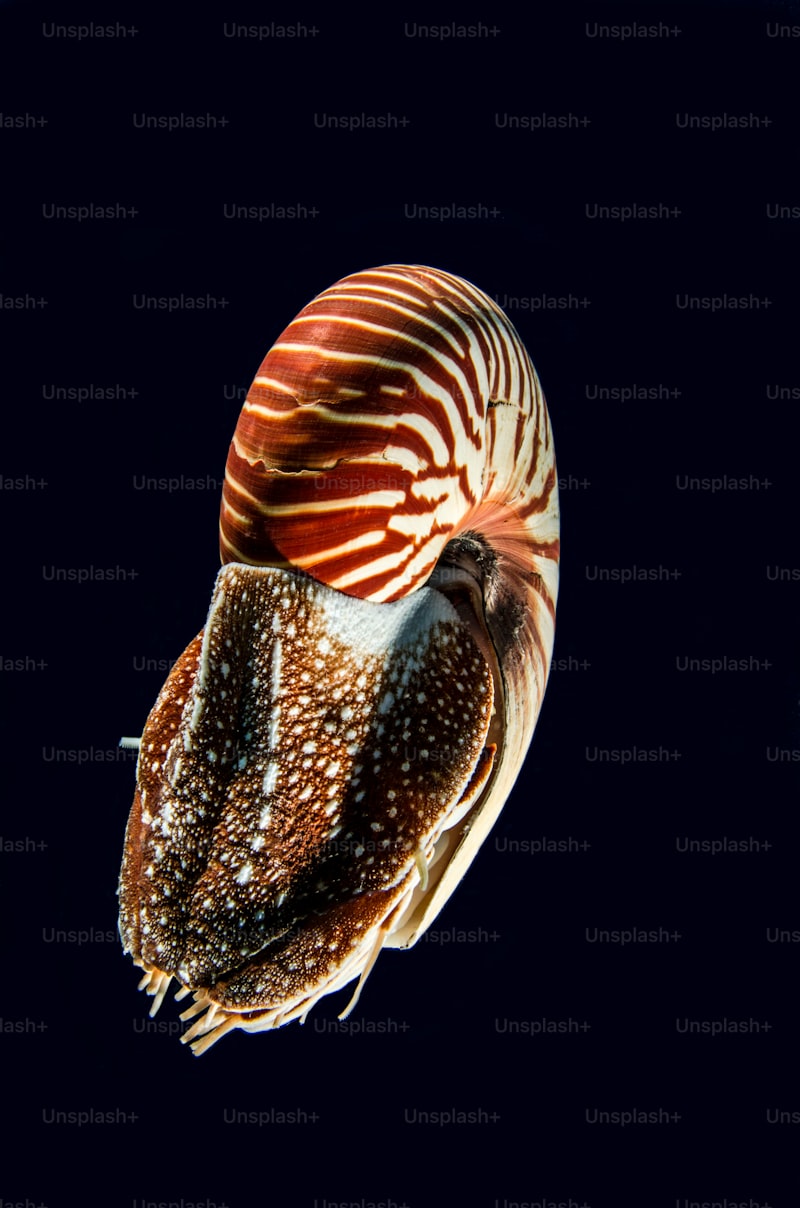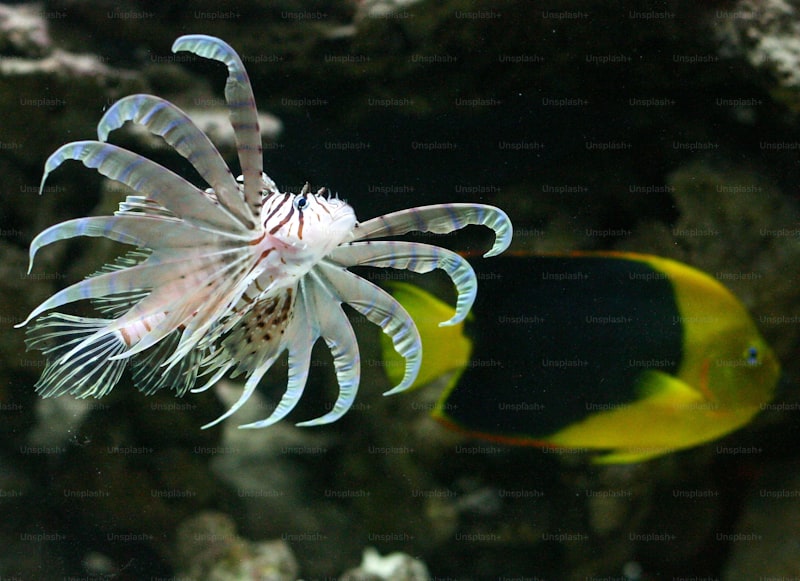Ever wondered about the incredible world beneath the ocean’s surface? Dive into the fascinating realm of marine invertebrates, where a plethora of creatures thrive without a backbone. From delicate sea stars to elusive octopuses, the diversity of marine invertebrates is simply astounding.
Imagine a coral reef bustling with life — vibrant colors and intricate shapes everywhere you look. Each species plays a unique role in this underwater ecosystem, adapting to survive in environments ranging from shallow tidal pools to the abyssal depths of the ocean floor.
One of the most striking aspects of marine invertebrates is their variety. Take jellyfish, for instance. These gelatinous creatures come in an array of forms, from the moon jellyfish with its translucent umbrella-shaped bell to the box jellyfish, known for its potent sting. Despite lacking a brain, they exhibit remarkable predatory and defensive behaviors.
On the other end of the spectrum are the crustaceans, such as crabs and lobsters. With their hard exoskeletons and jointed limbs, they scuttle along the ocean floor, scavenging for food or defending themselves from predators. Their diversity extends to habitats as well, with some species preferring rocky shores while others thrive in deep-sea hydrothermal vents.
Analogous to the insects of the land, marine invertebrates occupy a multitude of niches. Sea urchins, with their spiny exteriors, graze on algae, playing a crucial role in maintaining the health of kelp forests. Meanwhile, snails and clams utilize their shells for protection and burrowing into sandy substrates.
The ocean holds countless mysteries, and marine invertebrates are key players in its narrative. Their adaptability and resilience in the face of environmental challenges make them vital subjects of study for scientists worldwide. Understanding their roles in marine ecosystems is essential for conservation efforts aimed at preserving biodiversity and ensuring the health of our oceans for future generations.
Ready to explore the depths? Whether you’re a budding marine biologist or simply curious about the wonders of the sea, the world of marine invertebrates promises endless surprises and discoveries. Next time you stroll along the beach or gaze into an aquarium, remember the hidden world that thrives beneath the waves.
Unveiling the Hidden Kingdom: Exploring the Rich Diversity of Marine Invertebrates
Have you ever wondered what lies beneath the waves, beyond the shimmering surface of the ocean? The underwater world holds secrets beyond imagination, where a diverse array of life thrives in a realm we are only beginning to understand. One of the most fascinating aspects of this hidden kingdom is the incredible diversity of marine invertebrates.
Imagine a world where creatures come in shapes and sizes that defy logic. From delicate sea anemones swaying with the currents to the intricate shells of mollusks, each marine invertebrate is a masterpiece of evolutionary adaptation. These creatures lack a backbone yet possess an astonishing variety of forms and functions that contribute to the intricate balance of marine ecosystems.
Take the coral reefs, for instance, bustling cities of marine invertebrates. Here, colorful corals build towering structures that provide homes for countless species. Each polyp, a tiny but essential part of the reef, contributes to the ecosystem’s resilience and biodiversity. And let’s not forget about the humble sea stars, or starfish, with their ability to regenerate limbs—a testament to nature’s resilience and adaptation.
Diving deeper into the ocean’s depths, we encounter creatures straight out of science fiction. Picture the otherworldly forms of deep-sea jellyfish, glowing like ethereal lanterns in the dark. These bioluminescent wonders remind us of the mysteries that still await discovery in the ocean’s abyssal plains.
What about the industrious creatures like crustaceans, from tiny hermit crabs to mighty lobsters? Their exoskeletons provide both protection and flexibility, allowing them to navigate diverse habitats from rocky shores to sandy beaches with ease. And who could forget the playful octopus, a master of camouflage and problem-solving, demonstrating intelligence that rivals some of the smartest creatures on land?
As we continue to explore and study marine invertebrates, we uncover not just their diversity but also their critical roles in maintaining ocean health. They filter water, recycle nutrients, and serve as vital links in the food chain, supporting everything from small fish to apex predators like sharks.
The world of marine invertebrates is as vast and diverse as the ocean itself. Each species, from the tiniest sea sponge to the largest squid, contributes uniquely to the tapestry of life beneath the waves. So, the next time you gaze out at the ocean, remember that beneath its surface lies a hidden kingdom teeming with wonders waiting to be discovered.
From Coral Reefs to Deep-Sea Vents: A Journey Through the Diverse World of Marine Invertebrates
Imagine the bustling city of a coral reef, where tiny but mighty organisms like corals, sponges, and sea anemones create sprawling habitats. These ecosystems teem with life, offering shelter and sustenance to a myriad of fish and other marine species. Coral reefs, often dubbed the “rainforests of the sea,” boast a kaleidoscope of colors, thanks to the symbiotic relationship between corals and algae.
Venture deeper into the ocean’s abyss, and you’ll encounter a starkly different world around deep-sea vents. Here, where sunlight struggles to penetrate, life thrives through chemosynthesis. Unique creatures like giant tube worms, blind shrimp, and bizarre-looking octopuses have adapted to survive in this extreme environment. These vents, where hot, mineral-rich water gushes from beneath the Earth’s crust, provide a glimpse into how life can flourish under extreme pressure and temperatures.
The diversity among marine invertebrates is astounding, reflecting their adaptation to various niches and environments. Each species has evolved distinct features and behaviors to thrive in their habitats, from the intricate shells of mollusks to the delicate tentacles of jellyfish. Their survival strategies, honed over millions of years, continue to captivate scientists seeking insights into evolution and biodiversity.
As we unravel the secrets of marine invertebrates, we uncover not just biological marvels but also clues to our planet’s health. These creatures play crucial roles in marine ecosystems, influencing nutrient cycles, food webs, and even climate regulation. Protecting their habitats, such as coral reefs and deep-sea environments, becomes paramount for safeguarding our oceans’ biodiversity and resilience in the face of environmental challenges.

From coral reefs to deep-sea vents, the journey through the world of marine invertebrates is a testament to nature’s boundless creativity and adaptability. Each discovery expands our understanding of life on Earth, reminding us of the intricate connections that sustain our planet’s ecosystems.
Nature’s Architects: How Marine Invertebrates Shape Ocean Ecosystems
Marine invertebrates, those fascinating creatures that dwell beneath the ocean’s surface, play a pivotal role in shaping the delicate balance of our marine ecosystems. From the resilient coral reefs to the intricate patterns of oyster beds, these organisms act as true architects of their underwater realms.
Take corals, for instance. These tiny polyps may seem insignificant individually, but collectively, they form vast structures that provide shelter and sustenance to a myriad of marine life. Coral reefs not only support a quarter of all marine species but also act as natural barriers, protecting coastlines from erosion and storm surges. Their calcium carbonate skeletons create the foundation upon which countless other organisms thrive, making them indispensable to ocean biodiversity.
Similarly, oysters are more than just a delicacy; they are ecosystem engineers. Oyster reefs filter water, improving its clarity and quality, while also providing habitats for fish, crabs, and other creatures. Their intricate reefs serve as nurseries for juvenile marine life, offering protection from predators and ensuring the continuity of species.
These invertebrates, through their sheer diversity and adaptability, showcase nature’s genius in designing sustainable ecosystems. Their ability to create habitats, modify landscapes, and influence local climates underscores their importance in maintaining ecological balance.
Underwater Marvels: The Colorful World of Marine Invertebrates Revealed
Take the nudibranchs, often called the “butterflies of the sea,” for instance. These small, slug-like creatures sport a spectrum of colors—from electric blues to fiery oranges—that warn predators of their toxicity. Their beauty is not merely superficial; it’s a survival strategy honed through millennia of evolution. Moving gracefully across the reef, they embody both fragility and resilience, a testament to nature’s artistry.
Jellyfish, with their translucent bodies and ethereal glow, seem like creatures from another world. Drifting effortlessly through the depths, they capture the play of light in ways that mesmerize observers. Their tentacles, adorned with stinging cells, serve as both weapons and tools for capturing prey—a reminder of the complex interplay between beauty and functionality in the marine world.

Meanwhile, sea sponges, often mistaken for plants, come in a spectrum of shapes and sizes. From the intricate lace-like structures of glass sponges to the vibrant hues of barrel sponges, they filter water and provide crucial habitats for countless other marine species. Their existence highlights the interconnectedness of life beneath the waves.
In this colorful realm, every organism plays a vital role in maintaining the balance of marine ecosystems. From the smallest shrimp seeking shelter in a sea anemone’s tentacles to the graceful movements of a manta ray gliding through the blue, each encounter with these underwater marvels leaves an indelible impression. Their world, though hidden from most, invites us to ponder the wonders of evolution and the fragility of life in Earth’s vast oceans.
Survival Strategies of Marine Invertebrates: Adaptations Across the Ocean’s Depths
One of the most remarkable adaptations is bioluminescence, a trait found in many deep-sea invertebrates such as jellyfish and certain squid species. This natural light production not only aids in communication and camouflage but also serves as a lure for prey or a distraction for predators in the darkness where sunlight cannot penetrate.
Another survival strategy is found in the resilient exoskeletons of creatures like crabs and lobsters. These hard shells provide protection from predators and environmental hazards, enabling them to navigate rocky terrain or withstand crushing pressures in the deepest trenches.
In the perpetual darkness of the ocean depths, where food is scarce and temperatures near freezing, some invertebrates have developed the ability to enter a state of suspended animation known as diapause. This metabolic slowdown helps them conserve energy until conditions improve or food becomes available again.
Certain species of deep-sea worms and mollusks have adapted to extract nutrients from hydrothermal vents and cold seeps. These chemosynthetic ecosystems support life independently of sunlight, with bacteria converting chemicals like hydrogen sulfide into organic matter that sustains entire food webs in these extreme environments.
The diversity of survival strategies among marine invertebrates reflects their ability to innovate and adapt over millions of years. By harnessing unique biological processes and specialized anatomical features, these creatures continue to fascinate researchers and inspire biomimetic designs that could revolutionize human technology and exploration of the deep ocean realms.
Frequently Asked Questions
What threats do marine invertebrates face today?
Learn about the current threats to marine invertebrates, including habitat destruction, pollution, climate change impacts such as ocean warming and acidification, overfishing, and invasive species. Understand how these factors endanger their populations and ecosystems.
How do marine invertebrates contribute to marine ecosystems?
Discover how marine invertebrates play crucial roles in marine ecosystems through their diverse ecological functions, including nutrient cycling, habitat formation, and supporting biodiversity.
What are marine invertebrates and why are they important?
Discover the significance of marine invertebrates in ocean ecosystems. Learn about their crucial roles in maintaining biodiversity, nutrient cycling, and supporting fisheries.
What are examples of common marine invertebrates?
Explore examples of common marine invertebrates, such as jellyfish, octopuses, sea stars, and crabs. These creatures lack a backbone and play crucial roles in ocean ecosystems.
How many species of marine invertebrates exist?
Learn about the diversity of marine invertebrates, including their vast range of species worldwide.



